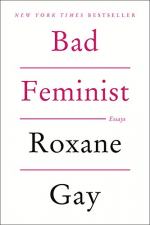
|
| Name: _________________________ | Period: ___________________ |
This test consists of 15 multiple choice questions and 5 short answer questions.
Multiple Choice Questions
1. According to James Wood (a writer Gay references in the essay "Not Here to Make Friends"), characters should be reflections of what?
(a) Our real selves.
(b) Our glorified selves.
(c) Our perfect selves.
(d) Our better selves.
2. According to the essay "The Trouble with Prince Charming," what word best describe Christian Grey?
(a) Kind.
(b) Sensitive.
(c) Controlling.
(d) Innocent.
3. In the essay "What We Hunger For," who initiated Gay's sexual assault?
(a) Her uncle.
(b) Her boyfriend.
(c) A boy from her math class.
(d) A stranger.
4. Who does Gay overhear speaking poorly about her while in graduate school, in the essay "Feel Me. See Me. Hear Me. Reach Me?"
(a) Her boyfriend.
(b) Her boss.
(c) A classmate.
(d) A professor.
5. In "Feel Me. See Me. Hear Me. Reach Me." how does Gay describe feeling at the end of graduate school?
(a) Scared.
(b) Burnt out.
(c) Excited.
(d) Confident.
6. In "Typical First Year Professor," what holiday does the narrator reference in her comparison of teaching to a child sitting at an adult dinner table?
(a) Halloween.
(b) Christmas.
(c) Thanksgiving.
(d) Easter.
7. In the essay "Beyond the Measure of Men," what is the ambiguous term that refers to untrue stories written by women?
(a) Women's fallacies.
(b) False fiction.
(c) Women's nonfiction.
(d) Women's fiction.
8. In the essay "Beyond the Measure of Men," what two authors wrote novels that are classified as "women's fiction"?
(a) John Updike and Richard Yates.
(b) F. Scott Fitzgerald and Ernest Hemingway.
(c) John Updike and Ernest Hemingway.
(d) Ernest Hemingway and Richard Yates.
9. According to the essay "A Tale of Three Coming Out Stories," what popular journalist "came out" in 2012?
(a) Anderson Cooper.
(b) Hunter S. Thompson.
(c) Andrew Cooper.
(d) Cooper Anderson.
10. In the essay "Girls, Girls, Girls," what group of people are often left out of popular cultures (such as television shows and films)?
(a) People of color.
(b) Women over forty.
(c) Hispanics.
(d) Women.
11. In the essay "Blurred Lines, Indeed," what is the name of the musician who sings about giving a good girl what she really wants?
(a) Jay-Z.
(b) Robin Thicke.
(c) Tupac.
(d) Eminem.
12. In the essay "Garish, Glorious Spectacles," who are the green girls interrupted?
(a) The women who get divorced.
(b) The women on reality television shows.
(c) The beautiful women.
(d) The teenage mothers.
13. In the essay "Garish, Glorious Spectacles," what is the best word to describe the novel Green Girl?
(a) Searing.
(b) Tragic.
(c) Cunning.
(d) Humorous.
14. What popular television show deals primarily with all manners of sexual assault against women, children, and occasionally men, as referenced in the essay "The Careless Language of Sexual Violence"?
(a) Law and Order: SVU.
(b) Rescue 911.
(c) General Hospital.
(d) Grey's Anatomy.
15. In "Peculiar Benefits," where does Gay travel with her family to learn about privilege?
(a) Haiti.
(b) Japan.
(c) Guatemala.
(d) Mexico.
Short Answer Questions
1. In the essay "Not Here to Make Friends," what book is the character Sara Levine obsessed with?
2. In her essay "A Tale of Three Coming Out Stories," what does Gay suggest that people feel most comfortable with?
3. In the essay "How We All Love," what phrase does Moran, author of "How to Be a Woman," want to reclaim?
4. In the essay "The Trouble with Prince Charming," what teenage book series does Gay mention is a modern day fairytale?
5. According to the essay "How to Be Friends width Another Woman," who should a woman never date or become romantically involved?
|
This section contains 576 words (approx. 2 pages at 300 words per page) |

|




